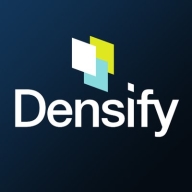

Densify and OpenText Migrate compete in the cloud management and migration space. OpenText Migrate is viewed as superior due to its comprehensive migration features and seamless data migration capabilities.
Features: Densify is known for its advanced resource optimization, real-time analytics, and cost management features, enabling efficient cloud utilization. OpenText Migrate is valued for its robust data transformation capabilities, secure and efficient migrations, and comprehensive migration features that highlight its specialization in migration processes.
Ease of Deployment and Customer Service: Densify’s deployment model offers ease and effectiveness in providing real-time insights and good customer support. OpenText Migrate provides a straightforward deployment experience with strong support for migration challenges.
Pricing and ROI: Densify provides competitive pricing with substantial ROI through optimized cloud resource management, ensuring cost savings. OpenText Migrate presents a higher initial setup cost with significant ROI due to its adept handling of data migrations and minimizing downtime.
| Product | Market Share (%) |
|---|---|
| OpenText Migrate | 6.6% |
| Densify | 1.6% |
| Other | 91.8% |

| Company Size | Count |
|---|---|
| Small Business | 1 |
| Midsize Enterprise | 1 |
| Large Enterprise | 9 |
Densify is a hybrid cloud and container resource management platform that makes workloads self-aware of their precise resource requirements and automates the resource management and selection process. This solution helps you control your cloud spend and also helps your apps perform and scale better. Densify enables you to match your cloud requirements with the optimal cloud supply. Additionally, Densify is the only technology that leverages patented, predictive machine learning-powered analytics to perform advanced modeling of workload patterns, and provide precise optimization directives. It is ideal for cloud engineers, container platform owners, and IT finance.
Densify works by:
Densify Features
Densify has many valuable key features. Some of the most useful ones include:
Densify Benefits
There are many benefits to implementing Densify. Some of the biggest advantages the solution offers include:
OpenText Migrate provides a robust and efficient way to transition workloads and applications across different environments, ensuring business continuity and seamless operation in complex IT infrastructures.
OpenText Migrate simplifies the process of moving servers and applications, offering an adaptable and efficient platform that minimizes downtime and maintains data integrity during transfers. It caters to varied migrations, whether on-premise, between data centers, or to cloud environments, supporting the rapid pacing of digital transformation.
What are the key features of OpenText Migrate?OpenText Migrate implementations are versatile, adept at supporting industries like finance, healthcare, and manufacturing where IT resilience is critical. Its ability to accommodate diverse migration needs allows sectors to maintain productivity and enhance performance with minimal disruption.
We monitor all Cloud Migration reviews to prevent fraudulent reviews and keep review quality high. We do not post reviews by company employees or direct competitors. We validate each review for authenticity via cross-reference with LinkedIn, and personal follow-up with the reviewer when necessary.